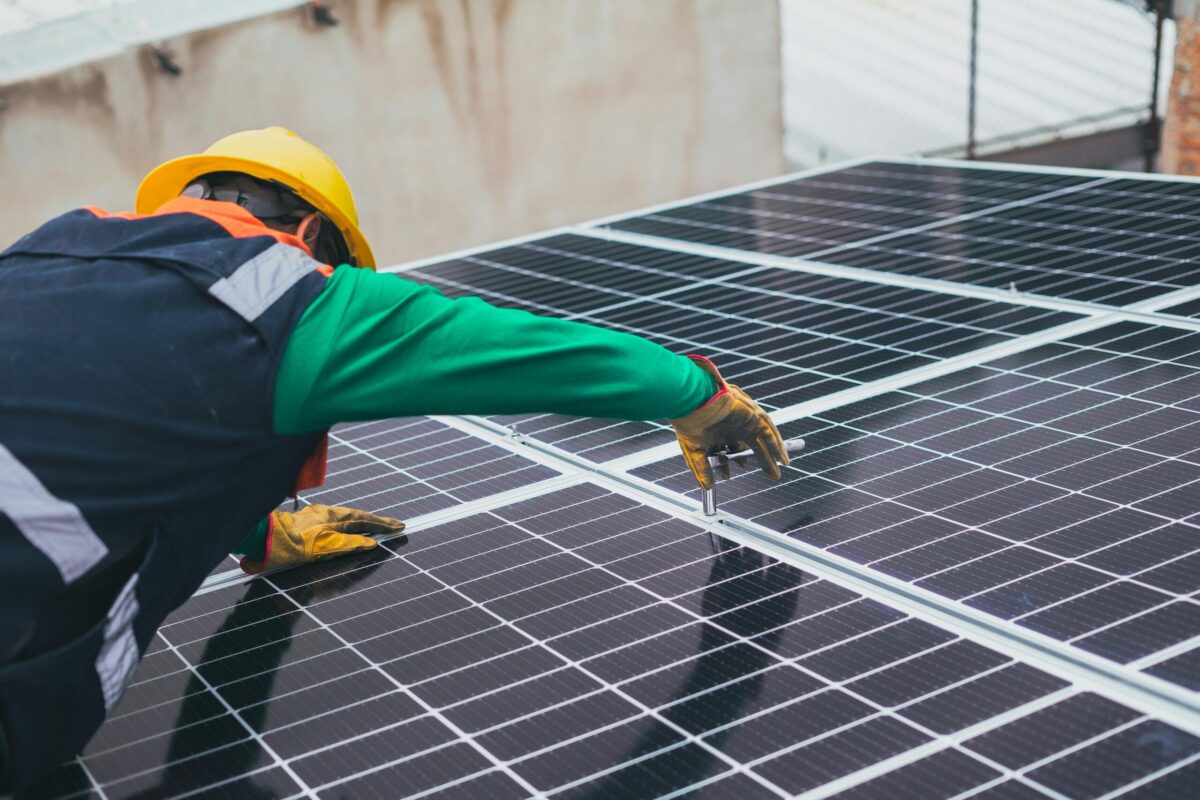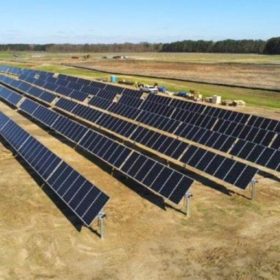Though it costs no emissions to harvest sunlight or wind, to build clean energy components costs carbon emissions. Research published by Columbia University Climate School’s Lamont-Doherty Earth Observatory made an attempt to trace just how much carbon the world may emit as it mines, manufactures, transports, constructs, and maintains solar and wind resources.
The report concludes that emissions expected as a result of building the energy transition are non-negligible, but there is a positive feedback loop where the faster we build, the less emissions will result. Having non-emitting power on-hand to build more renewable energy resources will only lower the embodied emissions and stem the tide of climate change more rapidly. The findings were published in Proceedings of the National Academy of Sciences.
The amount of emissions tied to an electricity generating facility from raw materials to operations is often referred to as a “carbon backpack.”
The current pace of renewables buildout is currently predicted to lead to about 2.7 degrees C temperature increase by 2100, leading to 185 billion tons of carbon backpack. This is equivalent to about five or six years of global emissions at current rates.
The backpack is lighter with a more aggressive path. If humanity is to build infrastructure fast enough to limit global warming to 2 degrees C, which international agreements aiming to come under the 2 degree mark, the carbon backpack would be cut nearly in half to 95 billion tons by 2100. If the energy transition exceeds all expectations and we limit temperature rise to 1.5 degrees C, the carbon backpack would be more of a handbag – amounting to 20 billion tons by 2100, or about six months of current global emissions.
“The message is that it is going to take energy to rebuild the global energy system, and we need to account for that,” said Lesk. “Any way you do it, it’s not negligible. But the more you can initially bring on renewables, the more you can power the transition with renewables.”
Lesk and his cohort of researchers point out that these are likely conservative estimates. The study includes generation-side emissions, and omits the cost of deploying energy storage and transmission. Distributed energy resources require much less of this type of infrastructure than centralized power, so the profile of solar and wind projects will impact this outcome greatly.
The study also modeled carbon emissions from adapting to sea-level rise. It found that construction of sea walls and moving cities inland where necessary would generate 1 billion tons of carbon dioxide by 2100 under the 2 degree C scenario. More energy will need to be expended to control inland flooding, irrigation in areas that might become drier, and adapting buildings to higher temperature extremes.
Lesk remains optimistic. He said that given cost decreases in recent years for renewable technologies, 80% to 90% of what the world needs could be installed in the next few decades, especially if current subsidies for fossil-fuel production are diverted to renewables.
This global clean energy transition is estimated to cost $3.5 trillion per year every year through 2050 in order to reach net-zero emissions, according to one study, or up to about $14 trillion for the United States alone in the same timeframe, according to another.
“Despite these limitations, we conclude that the magnitude of CO2 emissions embedded in the broader climate transition are of geophysical and policy relevance,” wrote the authors. “Transition emissions can be greatly reduced under faster-paced decarbonization, lending new urgency to policy progress on rapid renewable energy deployment.”
The study’s author Corey Lesk is a postdoctoral fellow in the Neukom Institute and Department of Geography at Dartmouth College. Previously he was a graduate student at Columbia Climate School’s Lamont-Doherty Earth Observatory.
The study was made in cooperation with Denes Csala of the United Kingdom’s University of Lancaster; Robin Krekeler and Antoine Levesque of Germany’s Potsdam Institute for Climate Impacts Research; Sgouris Sgouridis of the Dubai Electricity and Water Authority; Katharine Mach of the University of Miami; Daniel Horen Greenford and H. Damon Matthews of Canada’s Concordia University; and Radley Horton of Lamont-Doherty Earth Observatory.
This content is protected by copyright and may not be reused. If you want to cooperate with us and would like to reuse some of our content, please contact: editors@pv-magazine.com.









This is a very important report but it doesn’t immediately seem to have the authoroity it deserves.
The author is in a department of geography?
The last paragraph contains a lot of names and probably prestigious institutions but it just seems to be without sufficient fanfare. Was it presented at the last COP for example. Our government (Australia) needs a push to hurry up the transition to zero If this news was published more LOUDLY the the obvious government response should be to get it over and done with as soon as possible and everyone to throw in a few trillion to help poorer countries dump fossil fuels and do whatever needs to be done. Good work if it can be sold to governments around the world.